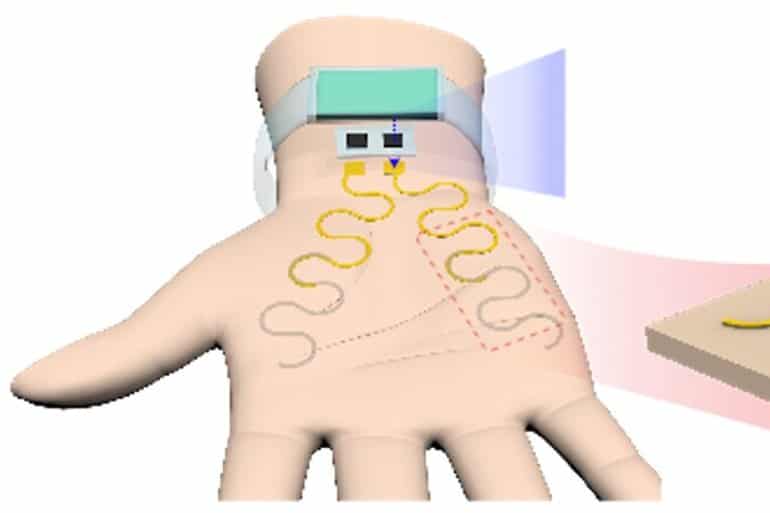Summary: A newly developed “e-tattoo” monitors electrodermal activity, revealing when a person is experiencing elevated stress levels. The “tattoo” attaches to the user’s palm and connects to a smartwatch.
Source: UT Austin
The palms can tell you a lot about your emotional state. They tend to get wet when people feel anxious or excited. This is used to assess emotional stress and to help people with mental disorders. However, the current devices are unreliable, bulky and can perpetuate social stigmas by sticking visible sensors on prominent areas of the body.
Researchers at The University of Texas at Austin and Texas A&M University have applied emerging electronic tattoo (e-tattoo) technology to this type of monitoring, known as electrodermal activity or EDA sensing.
In a paper published recently in Nature CommunicationsResearchers created an e-tattoo made of graphene that attaches on the palm and connects with a smart watch.
“It’s so unobstructive that people sometimes forget they had them on, and it also reduces the social stigma of wearing these devices in such prominent places on the body,” said Nanshu Lu, professor in the Department of Aerospace Engineering and Engineering Mechanics and leader of the project.
Lu and her colleagues have been working for years to develop wearable etattoo technology. Graphene has been a favorite material because of how thin it is and how well it measures electrical potential from human body, leading to very accurate readings.
But, such ultra-thin materials can’t handle much, if any strain. This makes it difficult to apply them on areas of the body that are prone to movement such as the palm/wrist.
The secret sauce of this discovery is how the e-tattoo on the palm is able to successfully transfer data to a rigid circuit—in this case a commercially available smart watch, in out-of-lab, ambulatory settings. The serpentine ribbon was made up of two layers of graphene, and partially overlapped gold.

It can withstand the strain of everyday activities such as holding the steering wheel, opening doors, and running by simply snaking it back and forth.
Palm monitoring tech currently uses bulky electrodes which are visible and easily removed. EDA sensors can also be applied to other areas of the body for a more accurate reading.
Other researchers have tried similar methods using nanometer-thick straight-line ribbons to connect the tattoo to a reader, but they couldn’t handle the strain of constant movement.
Lu said the researchers were inspired by virtual reality (VR), gaming and the incoming metaverse for this research. VR is used in some cases to treat mental illness; however, the human-aware capability in VR remains lacking in many ways.
“You want to know whether people are responding to this treatment,” Lu said. “Is it helping them? Right now, that’s hard to tell.”
This is the latest news in neurotech research
Author: Press Office
Source: UT Austin
Contact: Press Office – UT Austin
Image: The image is credited at UT Austin
Original Research Open access.
“Graphene e-tattoos for unobstructive ambulatory electrodermal activity sensing on the palm enabled by heterogeneous serpentine ribbons” by Hongwoo Jang et al. Nature Communications
